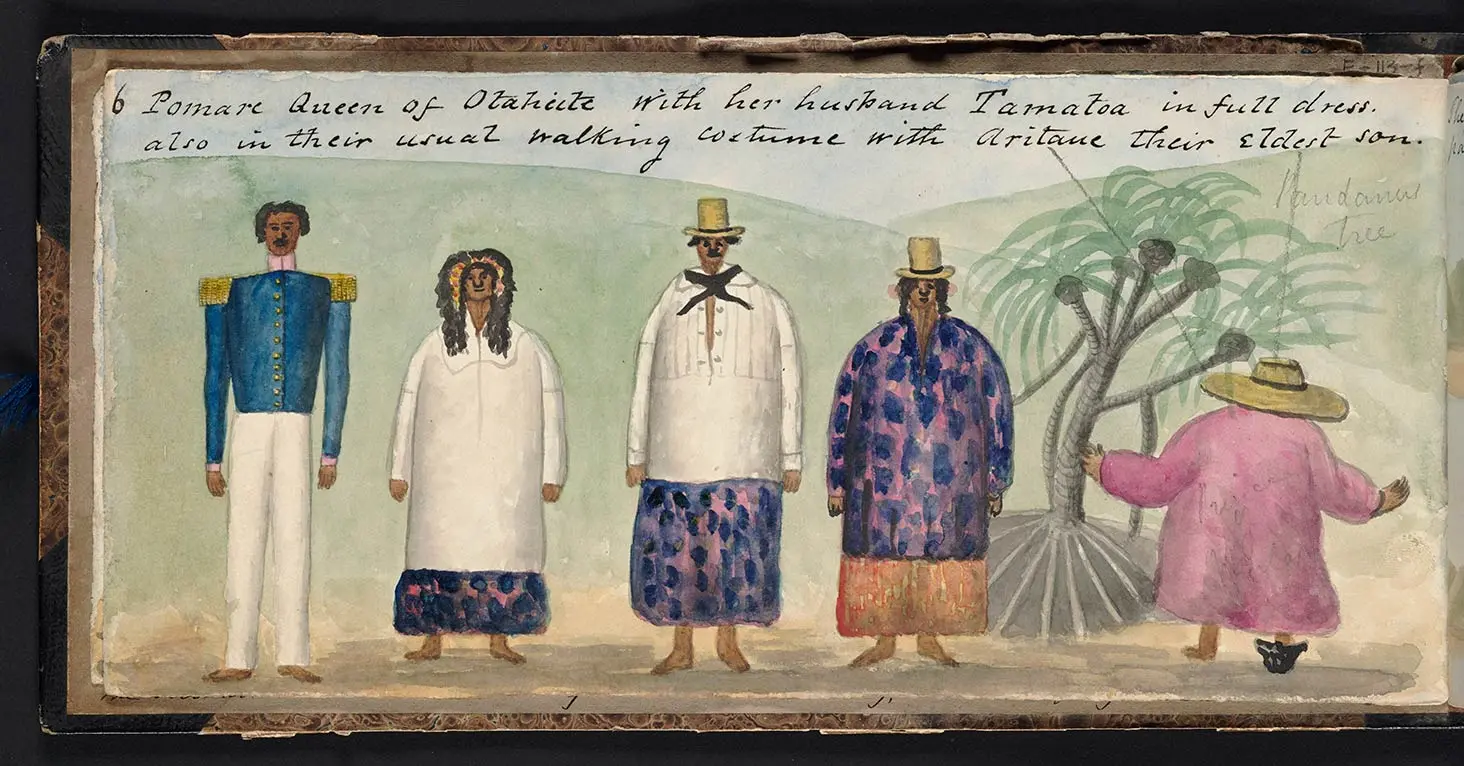Read a story about the sketchbook and why the artist visited Tahiti
On 29 April 1847, the newly constructed ship Harpley set sail on its maiden voyage from Tasmania, bound for England. It eventually reached Gravesend in February 1848, but not before springing an almost catastrophic leak that forced the crew to seek refuge in Tahiti.
Getting to safety was a desperate endeavour. A written account gives a potted but vivid description of how all able hands worked around the clock at the pumps to get the brand-new ship and its passengers safely to land: ‘Sprang a leak on the 17th of May 4500 miles from land in Long.150.5.W Lat.51.40.S. Threw overboard 50 Tons of Wheat and 4 Carronades and bore up for Valparaiso but Easterly Winds prevailing, on the third day we steered for Otaheite hoping to reach it in 10 days … we were 46 days before we were in harbour.’
The Harpley arrived just a few months after Queen Pōmare IV (‘Aimata Pōmare IV Vahine-o-Punuatera‘itua, 1813–1877) had reluctantly consented to rule under French administration, having returned from a period of exile in Ra‘iātea without any success in obtaining help from Britain against the French. During the ship’s 11-week stay on the island for repair, an unidentified member of its company filled a sketchbook with 52 watercolours and anecdotes, including the account quoted above. The sketchbook was acquired by the Turnbull Library in 2017 from the London antiquarian bookseller Maggs Bros.
This image of Queen Pōmare and her husband, ‘Tamatoa’ (Tenani‘a Ari‘ifa‘aite a Hiro, 1820–1873), is unusual, depicting the couple artificially as four individuals rather than two, standing alongside each other in formal and more casual attire. Perhaps diffident, the queen’s eldest surviving son, ‘Aritaue’ (Ari‘iaue Pōmare, 1838–1856), Crown Prince of Tahiti, is also depicted, with his back to the viewer.
The sketchbook’s simple but beautifully executed illustrations provide some insight into daily life for the indigenous Tahitians in the immediate aftermath of the Franco–Tahitian war (1844–47). The French military presence and triumphant flag feature in several of the images. Tahiti continued as a French protectorate, with Queen Pōmare as monarch until her death in 1877. Three years later, the islands became a French colony.
As to the fate of the Harpley, when the ship was examined on its arrival in England, the conclusion was drawn that the Tasmanian mountain ash or swamp gum used in its construction was not fit for purpose. Despite this, the vessel went on to complete several more journeys between England and Australia, until it was finally wrecked in 1862 while bound from Scotland’s River Clyde for San Francisco.
Story written by: Denise Roughan
Copyright: Turnbull Endowment Trust
Find out more
Explore the Alexander Turnbull Library collections further:
Digital Pasifik has Pomare Tahiti.
Topic Explorer has The Pacific: Culture, history and geography.
Want to share, print or reuse one of our images? Read the guidelines for reusing Alexander Turnbull Library images.
Curriculum links
